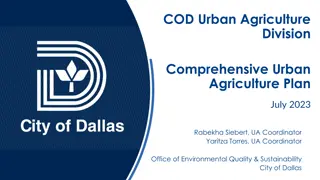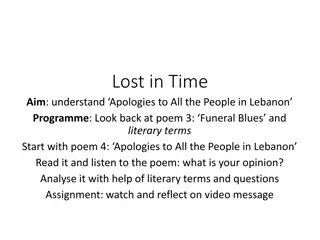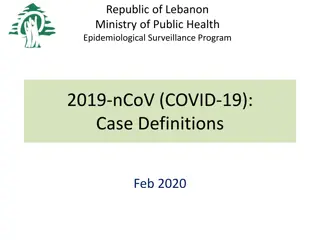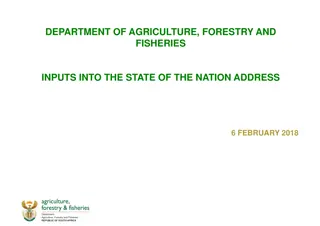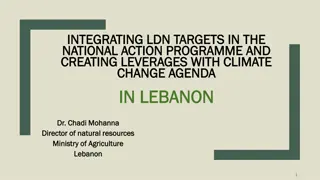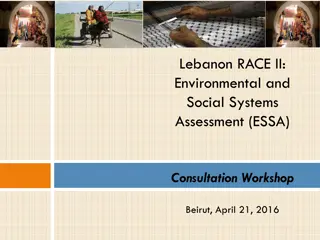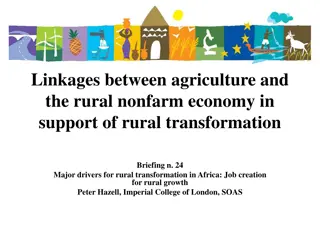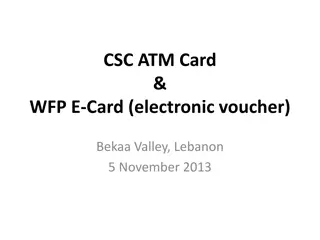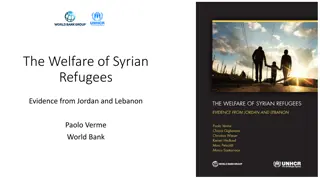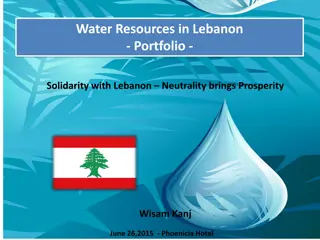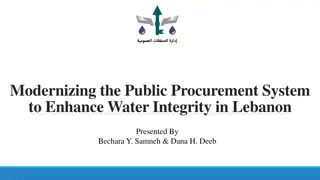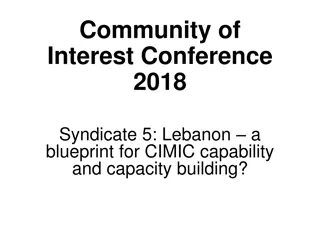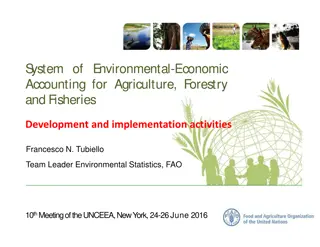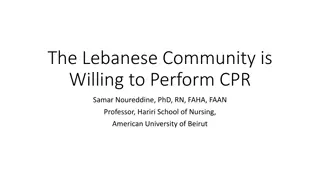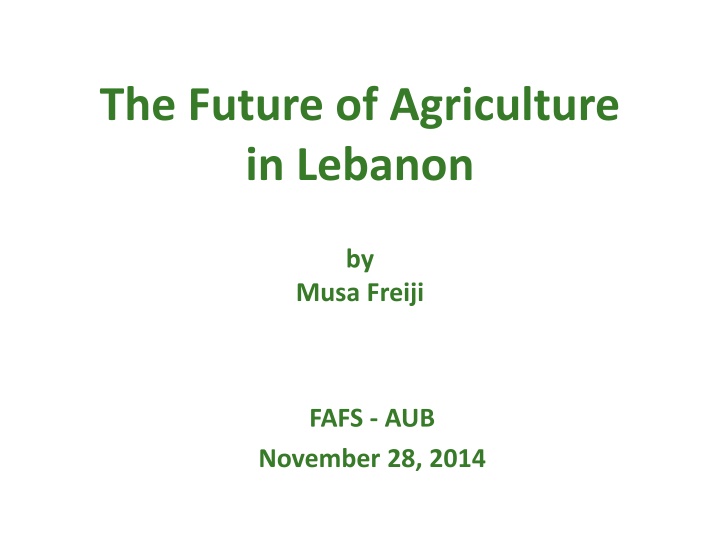
Future of Agriculture in Lebanon: Challenges and Solutions
Explore the challenges facing agriculture in Lebanon, including high production costs and heavy reliance on food imports. Learn about the impact of economic policies and trade agreements on the sector, and discover proposed solutions to protect local producers and promote sustainable growth.
Download Presentation

Please find below an Image/Link to download the presentation.
The content on the website is provided AS IS for your information and personal use only. It may not be sold, licensed, or shared on other websites without obtaining consent from the author. If you encounter any issues during the download, it is possible that the publisher has removed the file from their server.
You are allowed to download the files provided on this website for personal or commercial use, subject to the condition that they are used lawfully. All files are the property of their respective owners.
The content on the website is provided AS IS for your information and personal use only. It may not be sold, licensed, or shared on other websites without obtaining consent from the author.
E N D
Presentation Transcript
The Future of Agriculture in Lebanon by Musa Freiji FAFS - AUB November 28, 2014
The Future of Agriculture in Lebanon Contents: Cost of production of agricultural products Value of food imports Economic policy and trade agreements Trade Balance Need to change economic policy Advantages of the new policy Conclusion 2
Cost of Production of Agricultural Products Agricultural land limitation Scarcity of water for irrigation Difficult terrain for ease of plantation Lack of agricultural labor High cost of energy Lack of government support Corruption Lack of security 3
Value of Food Imports Value of food consumption: USD 1,060 million Value of food imports: USD 900 million % of imported food items: 85 % 4
Economic policy and Trade Agreements Open policy and reduction of import duties Preparation of Lebanon to join WTO Influx of imports and closure of several food industry companies IDAL and export subsidy 5
Trade Balance in Agriculture and Food Categories Year In million USD % Exports to Imports Imports Exports Deficit 2010 864.431 17.109 847.322 1.98 2011 861.637 16.059 845.578 1.86 2012 820.667 19.510 801.157 2.38 2013 888.729 25.112 863.617 2.83 2014 (7 months) 620.532 13.096 607.436 2.11 6
Need to Change Economic Policy Future of Agriculture is dim in view of present open trade policy Government should change all its trade agreements with GAFTA, bilateral with several countries, Euromed Agreement Government needs to review the import duties on all imported agricultural products that are produced or could be produced in Lebanon to a level that protects local producers 7
Advantages of the Protection Policy Reduce imports and save hard currency Create investment opportunities in agriculture and food production Market is locally available = No need to find export markets Creation of jobs for new graduates and new generations Reduce trade balance 8
Conclusion Future of agriculture and food production is dependent on government to change its economic policy from a fully open one to a protectionist policy Industrialized countries heavily subsidize agriculture and food production Private sector is willing to invest in feasible projects once a clear protectionist policy is in place 9
Thank you 10

